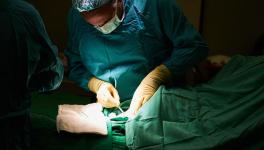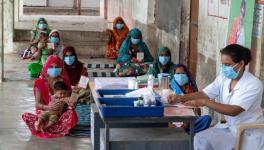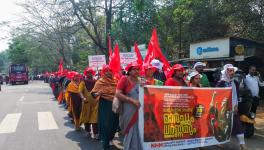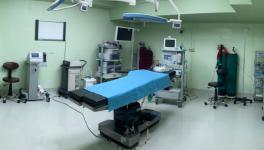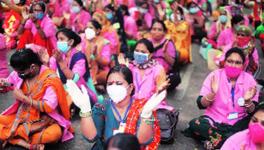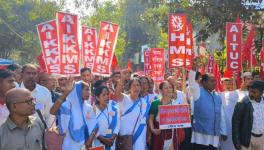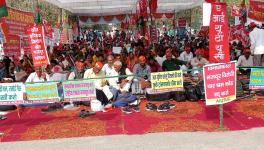Bihar: Much to the Relief of Poor Parents, Few AES Cases and Only 3 Deaths so far This Year
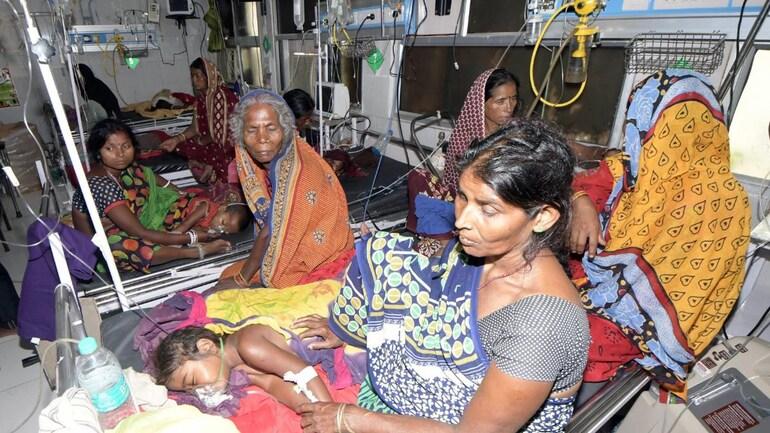
Image Courtesy: ANI
Patna: Much to the relief of the poorest of the poor parents, whose minor children used to be victims of Acute Encephalitis Syndrome (AES) in Bihar's Muzaffarpur and neighbouring districts for years, 45 cases and only 3 deaths have been reported officially so far this year. It is also big news for authorities, doctors and lowly paid contractual health workers engaged in prevention measures and awareness campaigns to contain the AES outbreak during the summer.
With clouds hovering and barely a week ahead of the much-awaited monsoon, Muzaffarpur Civil Surgeon Dr UC Sharma said going by the trend this time, there is no possibility of an outbreak of AES. "This is a result of our timely interventions on the ground if the lowest number of AES victims is anything to go by,” Sharma says.
Sharma admitted that fear of outbreaks is high during hot summer. Usually, AES cases see a surge in May and early June.
A senior official of the health department here ruled out more cases and deaths from deadly AES this year. “Despite climate change-induced hottest March and early heat waves in April followed by rising temperatures in May and hot and humid weather in the first week of June, the number of cases is few and even deaths. It appears that prevention measures worked,” he said.
According to a district health official in Muzaffarpur, unlike in the recent past when stress was to provide treatment to children diagnosed with AES, since last year, the focus has been on prevention measures to control the spread of this deadly disease, locally known as chamki bukhar.
To date, this year, most of the AES cases have been reported from the state-run Sri Krishna Medical College and Hospital (SKMCH) in Muzaffarpur. The SKMCH superintendent Dr BS Jha said forty-five children suffering from AES were admitted for treatment, 41 of them discharged after being cured, three of them died and one left against medical advice.
Three years ago, a survey conducted by the state government revealed that the AES has mostly affected the children from families living below the poverty line (BPL) in Muzaffarpur and neighbouring districts in the past five years.
The survey was conducted in the worst five blocks in Muzaffarpur to gauge the socio-economic condition of the affected families after the menace of AES in 2019 when it had almost presumed the form of an epidemic.
Most of the victims of AES were children of landless farm labourers, daily wage workers, seasonal labourers and people earning livelihood by doing odd jobs. Besides, the majority of the children affected by the AES that year were living without toilets and were forced to go for open defecation.
It was clear that this deadly disease mostly spread among the poorer sections. Estimates say that more than 75% of the victims belong to the socially marginalised section – comprising mostly Dalits along with Extremely Backward Classes (EBC) and Muslims. There is hardly any case in which the AES-affected child belongs to a rich and well-off family.
In a bid to reach out to the targeted population with a prevention "mantra" to minimise the casualties, the health department had worked towards the capacity building of all stakeholders. It has trained more than 20,000 volunteers, comprises medical officers,block-level officers, ANM, ASHA workers, Jeevika Didis, Anganwadi workers, Vikas Mitra, Tola Sevak, Cluster Resource Centre Coordinator (CRCC), elected members of panchayat including Mukhiya, Sarpanch, ward members.
Taking into consideration volunteers' different roles, clinical training was arranged for medical staff and non-medical staff. Non-clinical training was organised for others.
A massive information, education and communication campaign was launched in March for community awareness. Thousands of handbills highlighting preventive measures were distributed by the trained volunteers. Similarly, hundreds of posters, hoardings and stickers were pasted.
Saurav Tiwari, team leader of Care India in Muzaffarpur, said awareness campaigns for prevention reached the door of each of 8,600 households spread in all 1,650 villages under 16 blocks in Muzaffarpur in the last one month. "Trained volunteers have been taking special care of AES vulnerable 5 or 6 blocks in the district. They have repeatedly been informing villagers and holding meetings to take care of prevention."
He said ASHA workers and Jeevika Didis have been visiting villages on a daily basis to create awareness. This is an important move for prevention on the ground. They are distributing a kit of ORS and paracetamol tablets to villagers for use in case of sudden symptoms.
Tiwari said the deployment of 17 ambulances at hot spot panchayats and more than 1600 private vehicles and 14 ambulances were tagged with panchayats to ensure early referral of suspected AES cases." Ambulances and vehicles have been tagged for swift transportation of children suffering from AES."
The state government has tied up at least two vehicles, including an auto-rickshaw, each with every panchayat for hurdle free transportation of children suffering from AES to the nearby health centre.ASHA workers were provided mobile numbers of auto-rickshaw drivers, he said.
Tiwari claimed that prevention strategies worked in 2020 and 2021 during the COVID-19 pandemic period as AES was under control. In 2020, officially, 43 children were admitted to SKMCH with AES, and seven children died of the disease, and in 2021, only 39 children were admitted to SKMCH and seven children died of the disease.
It was much less compared to data of 2019 when the AES outbreak in Muzaffarpur and neighbouring districts hit the headlines. Officially 111 children died officially. More than 431 children suffering from AES were admitted to the hospitals, including SKMCH.
More than 500 children have died in the last decade due to AES, mainly in Muzaffarpur and its neighbouring districts of Vaishali, Sitamarhi, Samastipur, Sheohar, and East and West Champaran.
Get the latest reports & analysis with people's perspective on Protests, movements & deep analytical videos, discussions of the current affairs in your Telegram app. Subscribe to NewsClick's Telegram channel & get Real-Time updates on stories, as they get published on our website.












